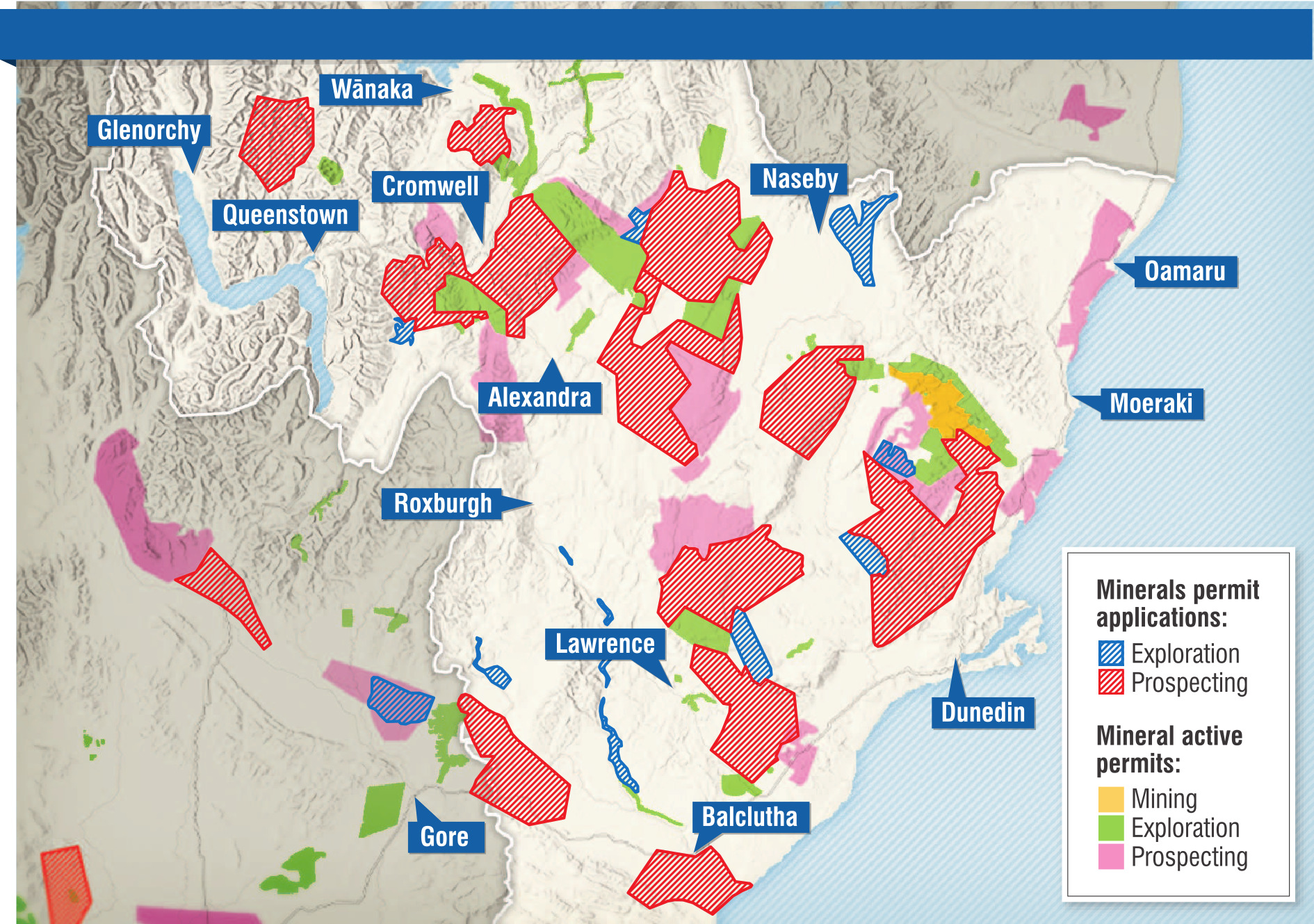
Resources Minister Shane Jones said yesterday with the government taking a more permissive approach towards mining, and the price of gold soaring, "people are prepared to chance their arm".
Ministry of Business, Innovation, and Employment (MBIE) petroleum and minerals national manager John Buick-Constable said the data showed "steady interest" in the possibility of striking gold in Otago.
Among those interested, Australian company Euro Gold Ventures applied for three prospecting permits in the region, covering more than 1100sqkm, late last year.
Its largest prospecting permit application at Antimony Saddle covers 551sqkm near Gibbston.
The companies that have applied to prospect or explore in the region over the past six months include those with shareholders from as far afield as the United States, as well as those with shareholders from the region itself.
Among the latter, Heritage Resources Ltd applied on December 5 to prospect about 100sqkm at Bungtown, east of Lawrence.
Minority shareholder Ian Begg, of Fairfield, said his "amateur comment" would be that the price of gold at present was prompting new interest in a lot of the pre-discovered goldfields.
"The current value of gold must have quite a bearing on it," Mr Begg said. "I guess modern prospecting methods probably have something to do with it as well."
Yesterday, the price of gold continued to climb, reaching $US2888 ($NZ5104) an ounce.
Santana Minerals announced last year it had made the most significant gold discovery in New Zealand in the last four decades in Central Otago.
Then in December the company confirmed it would use the new fast-track legislation to apply for its proposed gold mine at Bendigo, expected to generate $5billion in revenue.
Yesterday, chief executive Damian Spring, of Arrowtown, said the company did keep "a watching brief" on activity in the sector, noting the recent rush was for "prospecting permits and/or exploration permits in the most part".
He was sure those companies or individuals that were keen to start looking for gold in Otago had been encouraged by what was discovered at Bendigo.
"But at the end of the day this ground has been prospected for well over 40 years by companies associated with [Oceana Gold’s] Macraes and it took until 2021 to really understand and make the discovery that we have now built on."
Mr Buick-Constable said there was a "growing influx" in minerals permit applications across New Zealand.
He said last year New Zealand Petroleum and Minerals received 447 applications, a 55% increase on the previous year’s total of 288.
"Figures show steady interest in the prospectivity of Otago," he said.
There were 20 new prospecting and exploration permit applications submitted throughout the Otago region over the past six months alone, the majority of which were targeting minerals.
Timely permit decisions were "vital" for planning and delivering work programmes, and continued to be a focus area for the government regulator. Significant progress was made last year on the backlog of permit decisions "while managing the growing influx of new applications", he said.
Mr Jones said he was glad people were taking a risk and "putting their money where their mouth is".
"There’s been an uptick in activity.
"I think contributing to this uptick in activity is, No 1, there’s a more permissive tone and a more permissive regime in place now for mining," Mr Jones said.
"MBIE are processing with more efficiency the various applications — and I think that the price of gold is at such a high level, people are prepared to chance their arm."
The present government approach towards resource management was one that "seeks to manage effects on the basis of the risk".
"Historically, well let’s say over the last 25-30 years, successive governments have downplayed the relevance and downplayed the economic upside of mining.
"And our government in particular, the way that I’ve led the portfolio, we are deeply committed to restoring mining to a higher position of importance because we know that the New Zealand economy is like a quiver of arrows, and every single arrow has to strike a target.
"And mining and aquaculture are two such arrows.
"Admittedly they’re not as large as dairy, they’re not as large as the foreign direct earnings from tourism, but for the people who actually rely upon those industries, they’re lifesavers."












